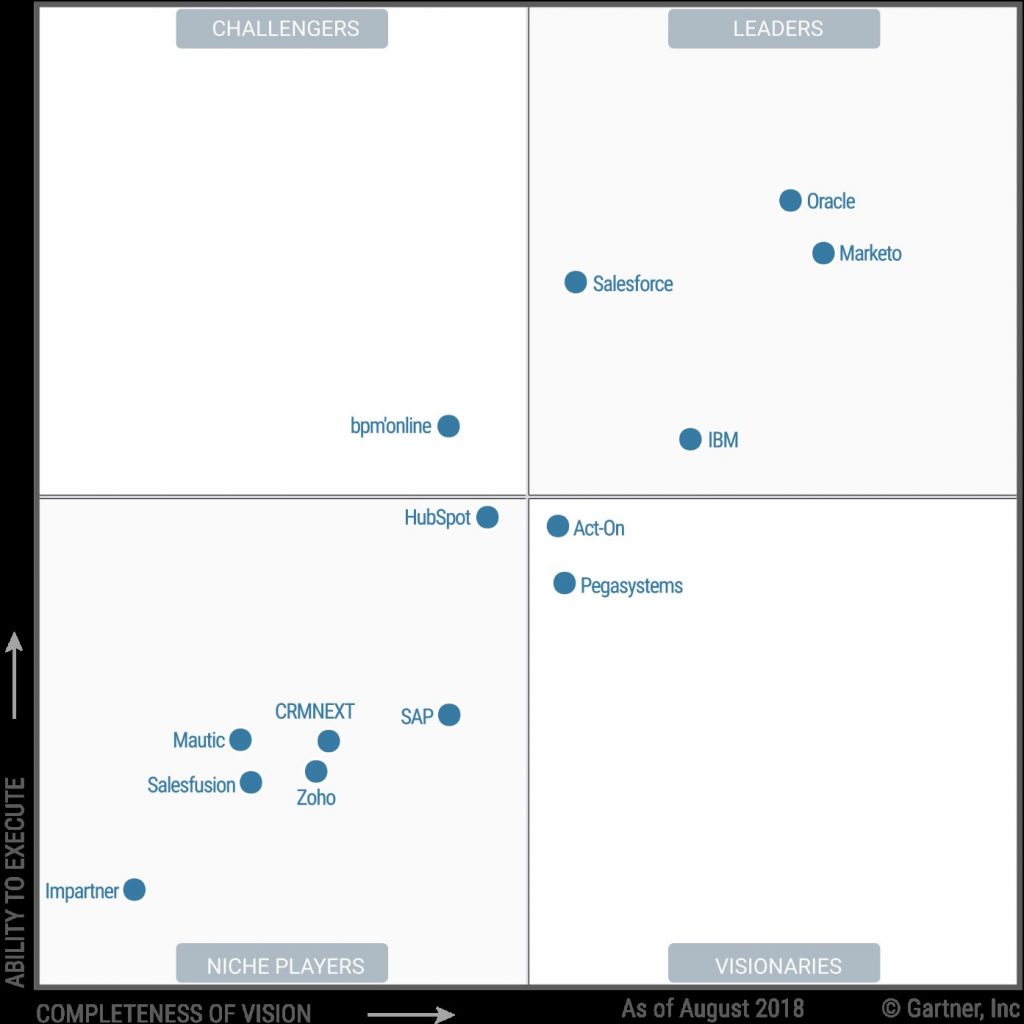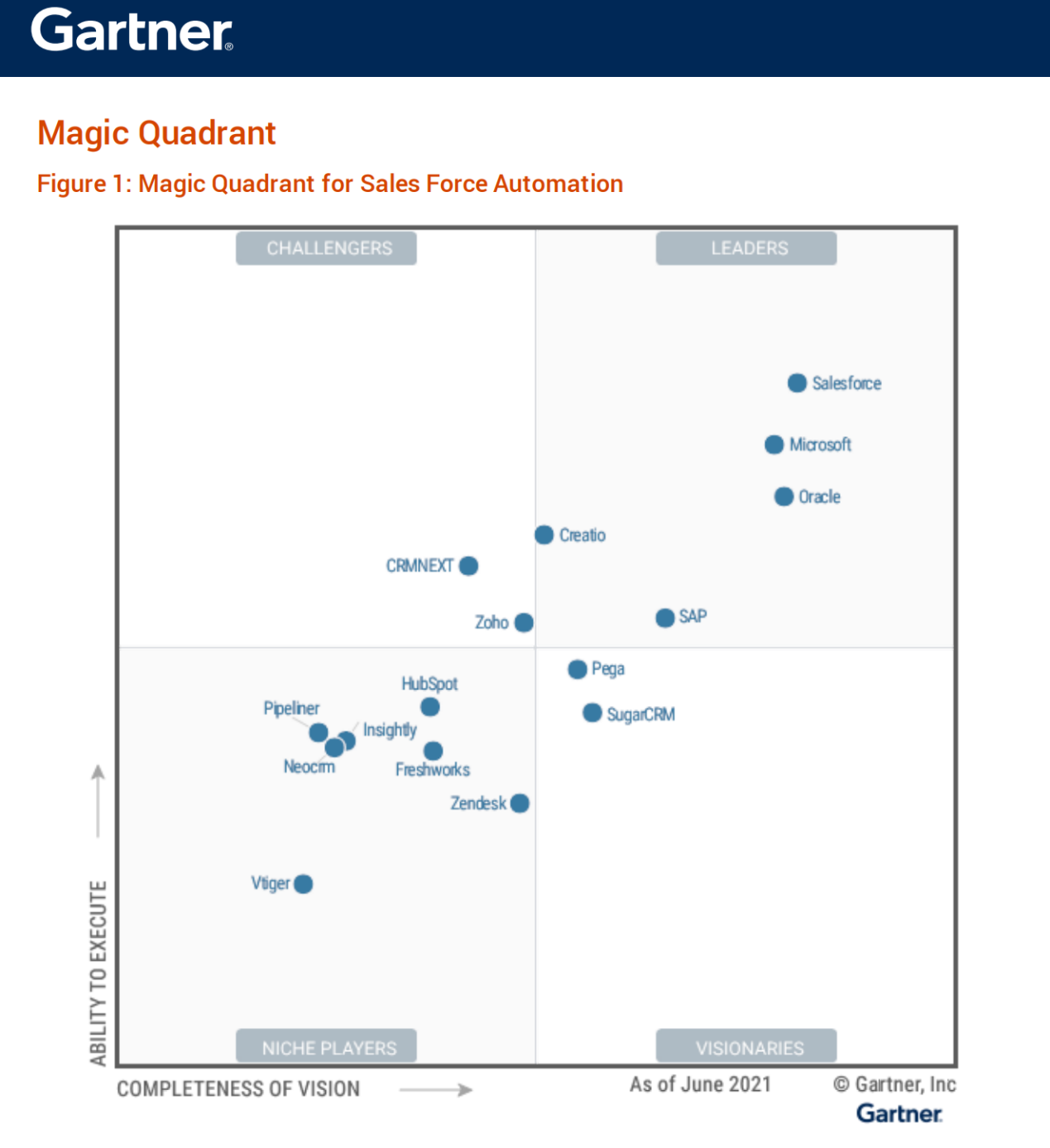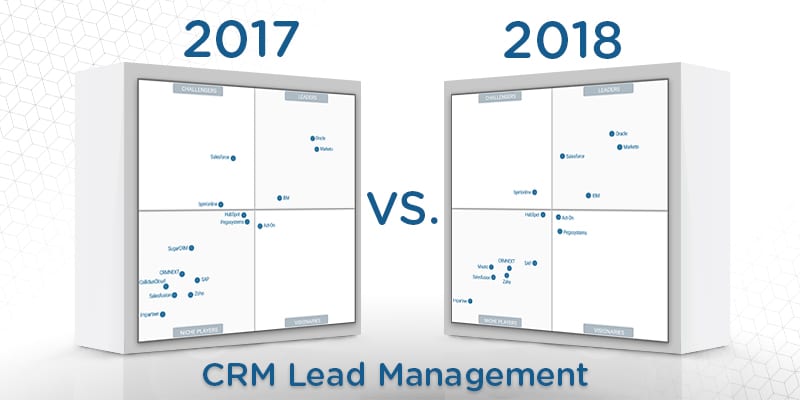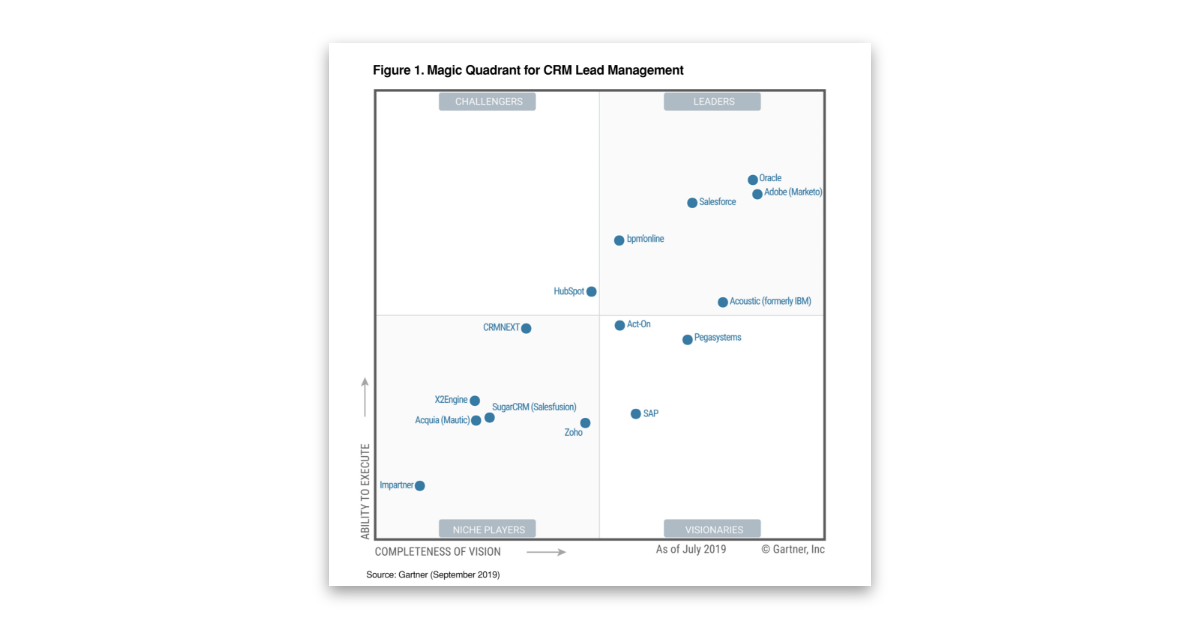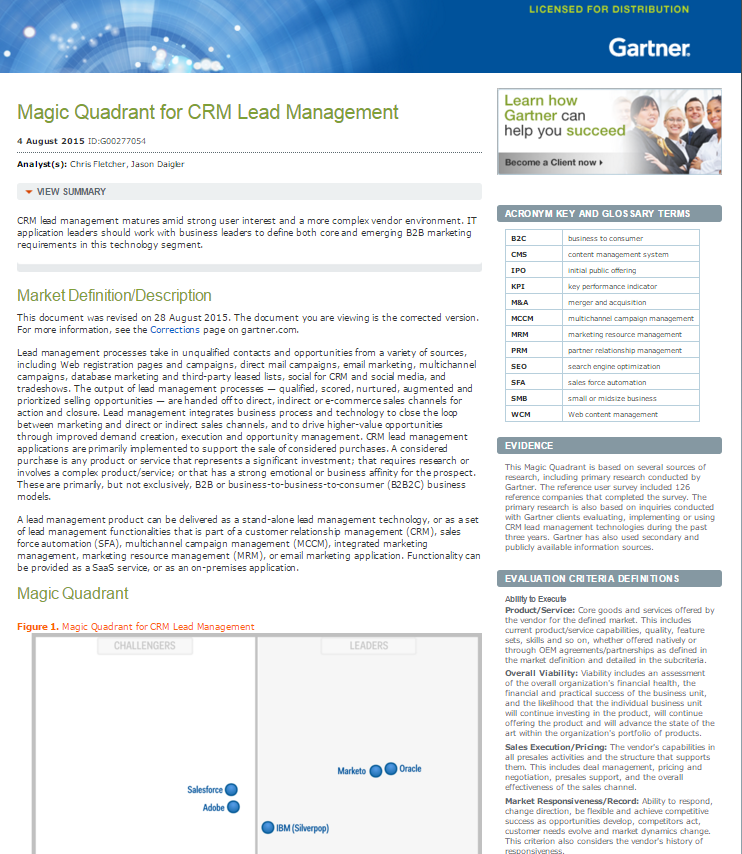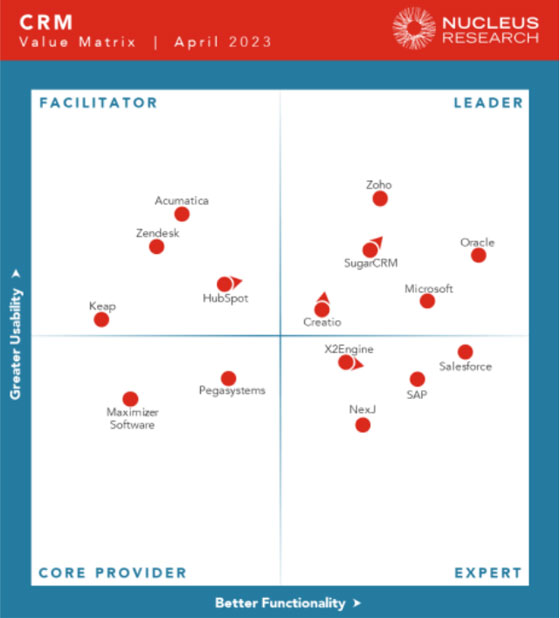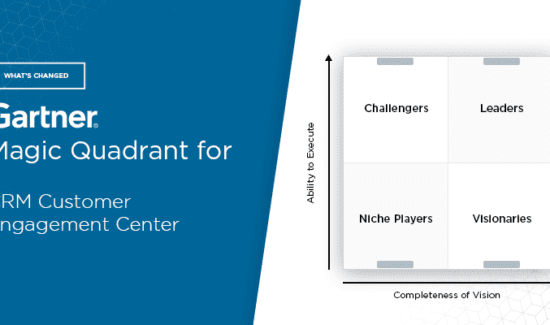Gartner Magic Quadrant For Crm Lead Management
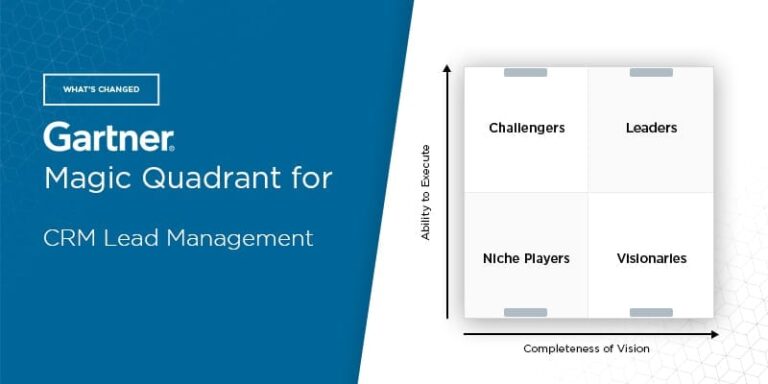
Imagine a bustling marketplace, overflowing with vendors vying for your attention. Each shouts about their wares, promising the best solution, the highest quality, and the greatest value. Now, picture a seasoned guide appearing, calmly pointing you towards the most reliable stalls, those with proven track records and innovative offerings. This is akin to what the Gartner Magic Quadrant does for the complex world of CRM Lead Management.
The annual Gartner Magic Quadrant for CRM Lead Management offers a comprehensive evaluation of vendors in this critical space, helping businesses navigate the myriad options and select the solutions best suited to their needs.
Understanding CRM Lead Management
At its core, CRM Lead Management is about capturing, nurturing, and qualifying potential customers, or "leads," as they move through the sales funnel.
It involves automating processes, tracking interactions, and providing sales teams with the insights they need to close deals effectively.
A robust lead management system bridges the gap between marketing and sales, ensuring that no lead falls through the cracks and that sales efforts are focused on the most promising prospects.
The Importance of Effective Lead Management
In today's competitive landscape, effective lead management is no longer a luxury; it's a necessity.
Companies that excel at lead management experience higher conversion rates, shorter sales cycles, and increased revenue.
Inefficient lead management, on the other hand, can result in wasted resources, missed opportunities, and frustrated sales teams. According to a study by Forrester, companies that nurture leads effectively generate 50% more sales-ready leads at 33% lower cost.
Gartner's Magic Quadrant: A Framework for Evaluation
The Gartner Magic Quadrant provides a visual representation of the competitive landscape in a particular technology market.
It assesses vendors based on two primary criteria: Completeness of Vision and Ability to Execute.
These criteria are further broken down into sub-criteria, such as market understanding, marketing strategy, sales strategy, offering (product) strategy, business model, vertical/industry strategy, innovation, geographic strategy, and overall viability.
Vendors are then positioned into one of four quadrants:
- Leaders: Execute well against their current vision and are well positioned for tomorrow.
- Challengers: Execute well today or may dominate a large segment, but do not demonstrate an understanding of market direction.
- Visionaries: Understand where the market is going or have a vision for changing market rules, but do not yet execute well.
- Niche Players: Focus successfully on a small segment, or are unfocused and do not out-innovate or outperform others.
Key Considerations When Interpreting the Quadrant
It's important to remember that the Magic Quadrant is a snapshot in time, reflecting the market as it exists at the time of publication.
A vendor's position can change from year to year as the market evolves and as vendors innovate and improve their offerings.
Furthermore, the ideal vendor for one organization may not be the same as the ideal vendor for another, depending on their specific needs, budget, and industry. Therefore, consider it as a starting point and conduct individual research is necessary.
Analyzing the 2024 Report (Example, if Available)
While specific details from the 2024 report are unavailable without direct access to the copyrighted document, we can discuss general trends and factors that typically influence a vendor's positioning.
For example, vendors demonstrating strength in AI-powered lead scoring, personalized customer experiences, and seamless integration with other marketing and sales technologies are likely to be viewed favorably.
Similarly, vendors that offer robust analytics and reporting capabilities, enabling businesses to track the effectiveness of their lead management efforts, are also likely to perform well.
Factors Influencing Vendor Positioning
Several key trends and factors influence a vendor's positioning in the Magic Quadrant.
These include:
- Innovation: The vendor's ability to develop and introduce new features and capabilities that address emerging market needs.
- Integration: The ease with which the vendor's solution integrates with other marketing and sales technologies, such as CRM systems, marketing automation platforms, and social media platforms.
- User Experience: The intuitiveness and ease of use of the vendor's solution, as well as the quality of its customer support and training resources.
- Scalability: The vendor's ability to support the needs of businesses of all sizes, from small startups to large enterprises.
- Pricing: The affordability and value for money of the vendor's solution.
Beyond the Quadrant: Making Informed Decisions
While the Gartner Magic Quadrant is a valuable resource, it should not be the sole basis for making purchasing decisions.
Organizations should also conduct their own research, including speaking with current users of the solutions they are considering, requesting demos, and conducting pilot projects.
It is crucial to identify your specific needs and priorities and then evaluate vendors based on how well they address those needs.
Questions to Ask When Evaluating CRM Lead Management Solutions
Here are some key questions to consider when evaluating CRM Lead Management solutions:
- What are your organization's specific lead management needs and priorities?
- What is your budget for a CRM Lead Management solution?
- What are your integration requirements? Does the solution need to integrate with your existing CRM system, marketing automation platform, or other technologies?
- How easy is the solution to use and administer?
- What level of customer support and training is provided by the vendor?
- What are the vendor's pricing models?
- Can the solution scale to meet your organization's future needs?
Ultimately, the best CRM Lead Management solution is the one that best aligns with your organization's specific needs, budget, and goals.
By carefully evaluating your options and considering the factors discussed in this article, you can make an informed decision that will help you improve your lead management effectiveness and drive revenue growth.
Think of the Magic Quadrant as a compass, pointing you in the general direction of potential success, but remember that you still need to chart your own course.

